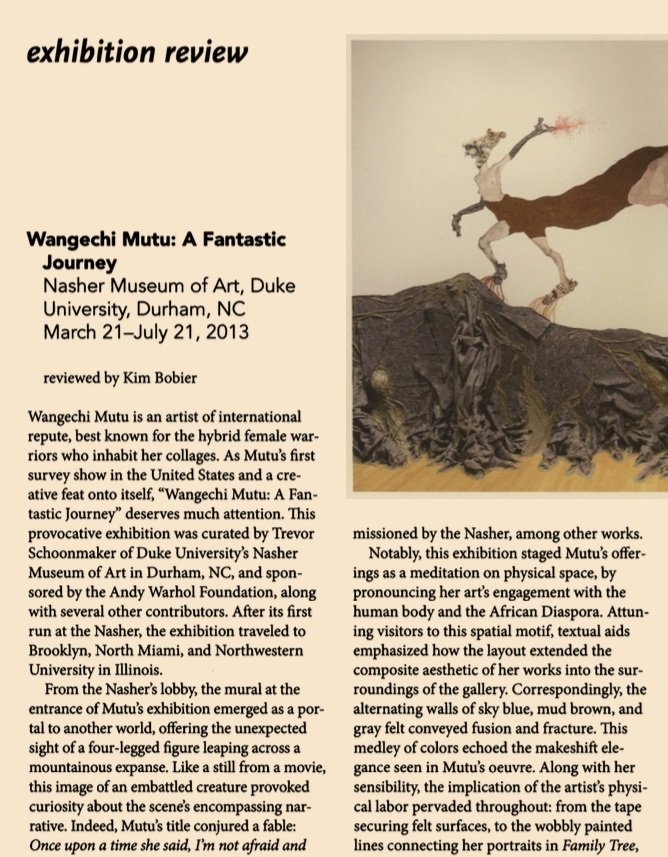Special Issues Edited
Book Project
Martha Rosler, Still from Vital Statistics of a Citizen Simply Obtained, video, 1977
capturing the body:
embodying Racializing Surveillance in Contemporary art
The first full-length study of its kind, Capturing the Body explores contemporary art that grapples with race-based bodily surveillance. The book focuses on United States art engaging biased biometrics (technologies of bodily identification and measurement). I situate such artwork as an extension of 1960s and ’70s body art. My book argues that this fresh framing of body art’s legacy reveals an under-examined phenomenon: artists since 1960s have harnessed the human body’s representational capacities to critique the representational logic encoded in US white supremacist surveillance.
“Views from the Larger Somewhere: Race, Vision, and Surveillance.”
Edited by Kim Bobier and Marisa Williamson, special issue. In Women and Performance: A Journal of Feminist Theory 30 no. 3 (July 2021)
Exhibition & Newspaper Essays
“Post-Black Art Is Not Post-Racial, or Is It?” ID Shop: Round Robin, November 2017, 16-21. (New York City’s Trilingual Community Newspaper sponsored by the Laundromat Project) LINK
REVIEWS
“Beatriz Albuquerque: Advertisement for the Waldorf – Astoria.” Beatriz Albuquerque: Advertisement for the Waldorf – Astoria. MCO Gallery: Porto, Portugal, 2016.
SCHOLARSHIP OF TEACHING AND LEARNING
“Discovering Bodies: Case Study of the Success of a Transdisciplinary Faculty Learning Community.” iteratio /i.te’ra:.ti.o/: Inquiries in Teaching Art and Design, no. 5 (forthcoming Fall 2025).
Chitra Ganesh, Skype Dream in Real Time, mixed media work on canvas, 2009.
“Interventions in Eye/Centric Pedagogy: A Response to Zami’s Essay and Reflections from the Classroom.” iteratio /i.te’ra:.ti.o/: Inquiries in Teaching Art and Design, no. 3, ( Fall 2023), 55-75. LINK
“Online Problem-Based Learning. Where Does the Instructor Problem Solving End and the Students’ Begin?: An Art & Design History Class Case Study.” iteratio /i.te’ra:.ti.o/: Inquiries in Teaching Art and Design, no. 2 (Fall 2022), 1 - 13. LINK
“Owning the Assignment: Redesigning Reading Presentation Guidelines for Student-Centered Inquiry.” iteratio /i.te’ra:.ti.o/: Inquiries in Teaching Art and Design, no. 1 (Fall 2021), 60-100. LINK
DISSERTATION
Alfredo Jaar, The Fire Next Time, 1989, installation
“Representing and Refracting the Civil Rights Movement in Late Twentieth-Century Art” (2018) investigates 1980s and ’90s United States-based visual artists’ appropriations of famous images of the 1950s and ’60s civil rights movement. A generation following the civil rights movement’s height, United States popular culture and politics proliferated socially conservative portrayals of it. In response, several late twentieth-century artists reclaimed the movement’s radical social propositions by recontextualizing its visuals. To this end, my study focuses on visuals in Lorraine O’Grady’s photo-installation, Glenn Ligon’s paintings, Alfredo Jaar’s installation art, and Kerry James Marshall’s paintings. These artworks reflect the outsized role of the civil rights movement’s visual repertoire in shaping US perceptions of social inequity. Moreover, O’Grady’s, Ligon’s, Jaar’s, and Marshall’s respective practices demonstrate that artistically reprising the movement became a powerful vehicle for anti-capitalist, Black feminist, and queer-of-color critique.


















